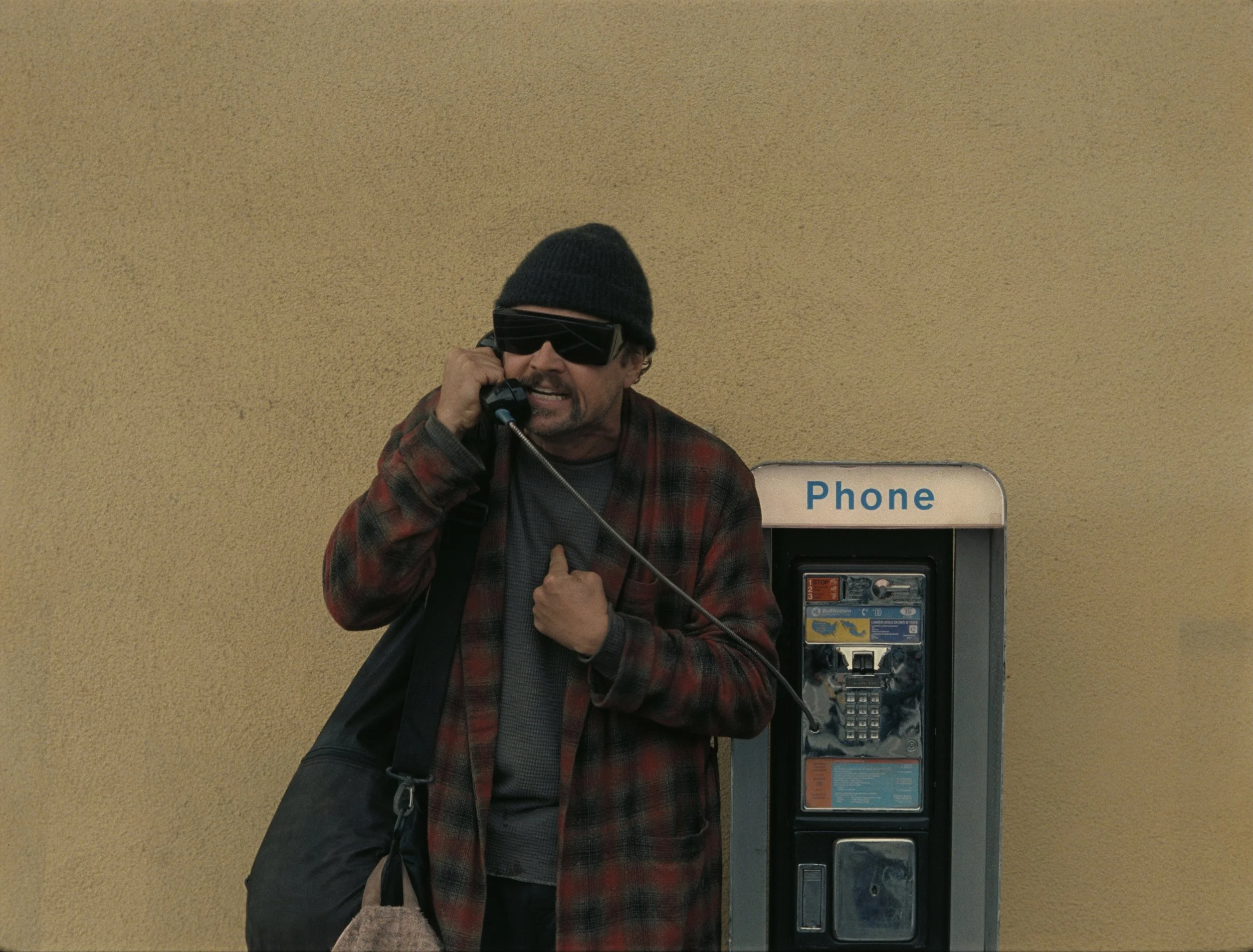Resistance training: Leonardo DiCaprio in One Battle After Another. Pic: Warner Bros. Pictures
Coup D’état - One Battle After Another review
A version of this appeared in The Scotsman in September 2025.
Paul Thomas Anderson raises the filmmaking bar with One Battle After Another, a blistering cinematic coup d’état against the atrophied ambitions of most big budget filmmaking. Capitalising on Leonardo DiCaprio’s box-office caché (and Warner Bros’ deep pockets), he’s taken slippery source material—Thomas Pynchon’s freewheeling 1990 novel Vineland—and transformed it into a wild ride across contemporary America’s politically divided landscape, not with hectoring polemics, but with an exhilarating, brilliantly directed story replete with bank robberies, immigration raids, white supremacist cabals, gun-toting nuns, one beer-guzzling karate sensei (played by Benicio Del Toro), and an audacious climactic car chase that somehow manages to thoroughly re-invent this over-used action movie staple.
Fittingly for a film with such outré elements and eccentric characters it also has DiCaprio on gloriously buffoonish form. He plays our pseudonymous hero, Bob Ferguson, a dope-addled burnout forced to contend with his activist past when his teenage daughter Willa (newcomer Chase Infiniti) is targeted by Sean Penn’s character, Col. Stephen J Lockjaw, the hypocrisy-riddled soldier responsible for arresting her militant mother, Perfidia Beverly Hills (Teyana Taylor), 16 years earlier.
Anderson spends the first hour of One Battle After Another’s propulsive 165-minute running time laying out Bob and Perfidia’s antics as members of an underground resistance group known as the French 75. In the film’s opening salvo, their liberation of an immigrant detention centre arouses the interest (and more) of Lockjaw, who turns out to be a ramrod-straight weirdo whose powerlessness before Perfidia’s sexually charged, Angela Davis-esque revolutionary only intensifies his subsequent obsession with her.
It’s Perfidia’s uncompromising zeal that eventually brings down the French 75. When we pick up the story again, just over a decade-and-a-half later, Bob is lost in a cannabis fog, tethered to reality only by his love for Willa, whose existence reignites Lockjaw’s scrutiny of their off-the-grid family just as his own invitation to join a shady, well-funded group of Christian white supremacists known as the Christmas Adventurers Club forces him to revisit his own past and clean house.
The ensuing father-daughter story is part conspiracy thriller, part state-of-the-nation satire; it’s also hands-down one of the best-looking films of the last few years thanks, in part, to Anderson shooting on VistaVision. The higher-resolution film format, developed in the 1950s to counter the rise of television, is currently experiencing a revival from filmmakers intent on keeping the art of cinema alive in a streaming era full of films and TV shows that are virtually interchangeable and shit-looking. Blown up on IMAX, its raw aesthetic can be fully appreciated in granular detail, with DiCaprio’s performance a masterclass in denuded bafflement and those aforementioned bank heists and car chases popping with the immediacy of The French Connection, and not in some slavish act of mimicry either, but in the way they feel brand new to the eyeballs.
None of which should come as a surprise to anyone who’s followed Anderson’s career since he broke through in the 90s. He may have been one of the best students of the New Hollywood era (Hard Eight, Boogie Nights and Magnolia are awash with stylistic flourishes straight out of the Scorsese/Altman playbook), but right from the start there was an emerging, audacious style that was all his own and he’s long since pushed past his influences. Structuring his movies more like symphonies, he tracks his characters’ tumultuous inner lives in movements, not acts, his ongoing collaboration with Radiohead’s Jonny Greenwood emboldening him to ratchet up the musicality of those same charaters’ emotions as they erupt on screen in rising gestures of mirth and mayhem.
In One Battle After Another, Greenwood’s atonal score jerks and pulls us in different directions as DiCaprio’s Bob—bandit moustache, Lebowski dressing gown—tries to wrap his zonked-out brain around the sudden threat to his daughter’s life. What follows is purposely funny and scary, with Anderson—packing a lot in—showing how the outwardly clownish details of this world belie the authoritarian impulses at play.
Though only very loosely inspired by Vineland (Anderson hasn’t really tried to adapt Pynchon’s densely layered prose the way he did with 2014’s Inherent Vice), One Battle After Another nevertheless retains the radical spirit of its politics, particularly its postmodern meditation on the US government’s ongoing efforts to steam-roller dissent out of existence, something the book explored in the context of Reagan’s re-election, but which Anderson locates to the present day, albeit without mentioning Trump.
That’s no cop-out either; rather it’s a way to explore―per Pynchon―the “perennial question of whether the United States still lingered in a pre-fascist twilight, or whether that darkness had fallen long, stupefied years ago.” In other words, it’s a film very much of the moment, but also a timeless tale of the ongoing need for resistance, twin impulses that Anderson has crafted into a crazy epic about where we are right now, how we got here and why despair isn’t the answer. An instant masterpiece.
